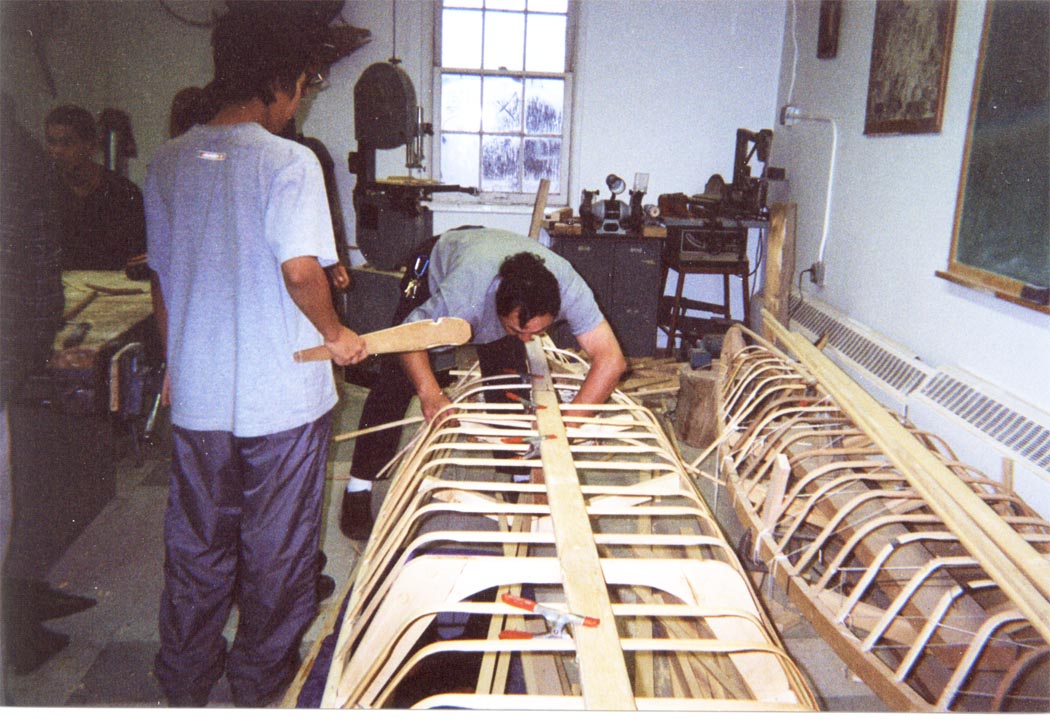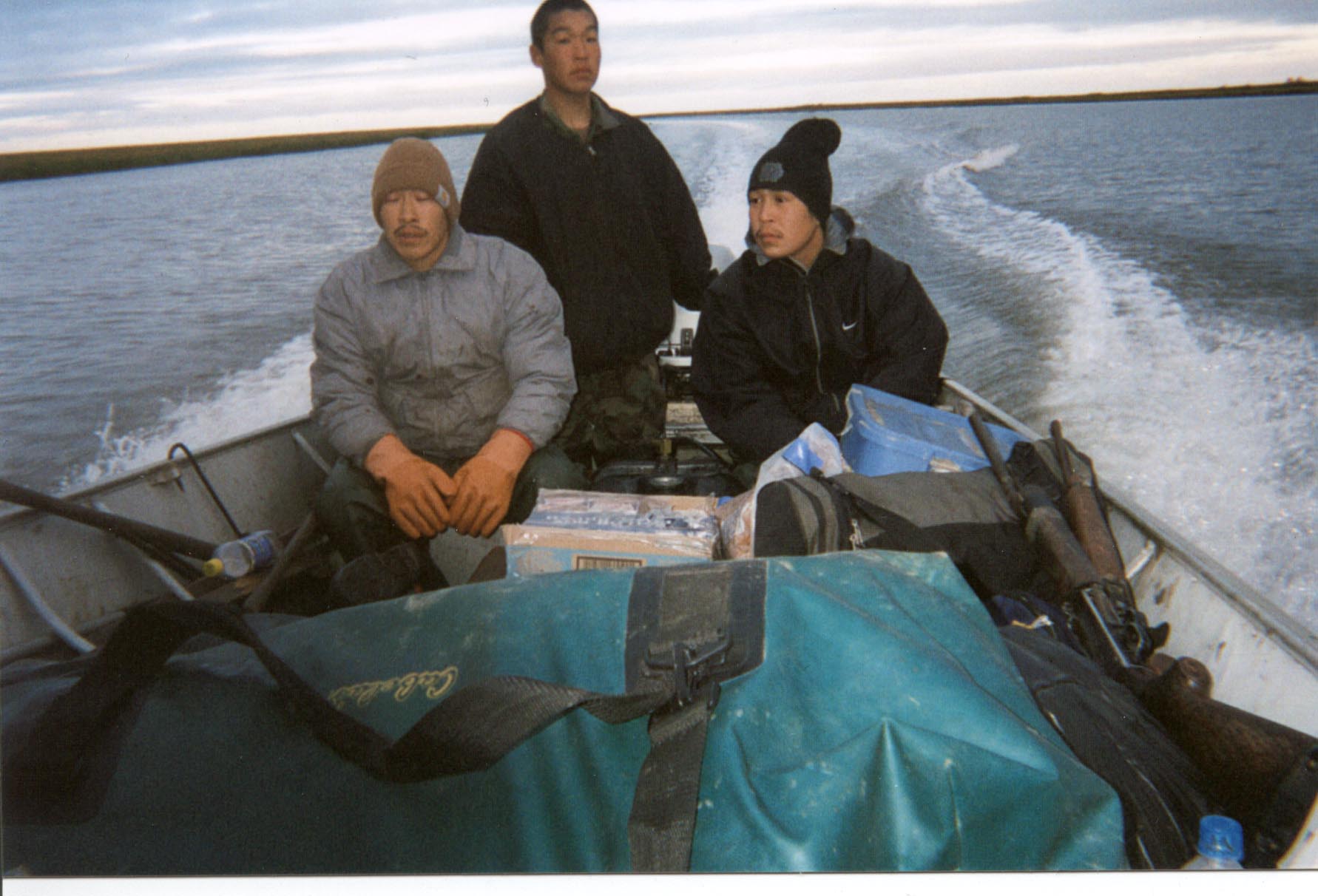
click for larger image
|
Qayaq Evolution Most Qayaq revival projects focus firmly on the past, but this summer (Aug. 2002) we had the unique pleasure of trying to nudge Time’s arrow in the other direction. Our gaze was on the future and our goal was to replace the power of the human paddler with energy borrowed from the sun. John Pingayak, a Native educator and culture bearer from Chevak Alaska has long held a dream that the traditional qayaq could be integrated back into the economic and cultural life of his people. As the conceptual godfather of the new hybrid, his persistent vision and belief in the new idea was an essential part of our success. I did the preliminary sketches on typing paper one weekend. The building was a marathon effort; I put the last stitches in less than three weeks after the keel was laid. |
|||||
 |
|||||
| Pingayak setting ribs | |||||
|
The introduction of outboard
motors and skiffs into Yup’ik Eskimo life put an effective end to
qayaq use and development for several generations. This is now changing
under the pressure of economic and environmental concerns, increased cultural
awareness and the emergence of new hunting and travel patterns.
|
| Almost
all water travel on the Delta region is done by outboard skiff and large
horsepower outboard motors. Fuel costs play a major role in Eskimo life
and trip planning. A powered qayaq may offer advantages in fuel economy
for such traditional activities as light travel and hunting and gathering.
In addition a smaller, narrower boat may be able to use traditional “shortcuts”.
These small sloughs and creeks offer opportunities for direct travel but
are usually too narrow and shallow for the local skiffs. The main river
routes are very winding and can easily double the distance a person needs
to cover. This can be significant, because traveling long distances for
resources is a reality of current day Eskimo life. |
||
 |
||
| After a few hours of river travel you enter the "zone". This is Aaron, Jonathan and Brendan. When these guys are cold, you're already frozen. It's always winter on the river. |
||
|
We also examined any pictures
we could find of the large square-sterned canoes used for freighting and
travel in Alaska’s interior.These practical craft were virtually
part of the landscape, and represent a very practical adaptation of mechanical
power wedded to traditional craft.
Pingayak hopes to see qayaqs of this type coming into use, and there are factors that might make this happen. Builders down south may find this design of interest too for many of the same reasons. This qayaq is light enough to car-top
and will let a family or small group travel in safety and comfort.
This would be a great camper craft or island-hopper for families
with small kids. It will accommodate serious travelers or hunters/campers
too. |
|||
|
The smaller size and handiness
of the new qayaq offers advantages for the seal hunter out on the sea
ice, or the upriver moose
hunter in the Yukon drainage.
Many of the adults and Elders checking on our progress were decidedly
enthusiastic about the hunting, camping and berry-picking potentials offered
by the new craft,
Interestingly enough,
some individuals were quite suspicious of the idea at first. Most of the
reservations centered around the “wrongness” of applying mechanical
power, which was seen as vaguely sacrilegious. This outbreak of cultural conservatism
seemed to fade away as the boat took shape.
Eskimos are a very practical people who have a long history of adapting western goods and technologies to suit their own purposes, so in some ways, the appearance of this boat, which we suspect is the first of its’ kind, was probably waiting to happen sooner or later. I was also told of at least one other adaptation in the use of power; the qayaq prompted recollections of Briggs & Stratton powered umiaks and skiffs that used an extended prop shaft over the transom for propulsion. Similar systems are used today in Louisiana and Indonesia among other places.) The Motor Qayaq is the same length as the
traditional model, but is deeper and wider. The square stern allows us
to carry the beam almost all the way aft for extra volume and buoyancy.
Added width (about 6-7 inches) contributes both added stability and room
, Construction follows traditional lines with few exceptions. If you think of a very large and robust Klepper you won’t
be far from a good sense of what this qayaq
is about.
|
|||